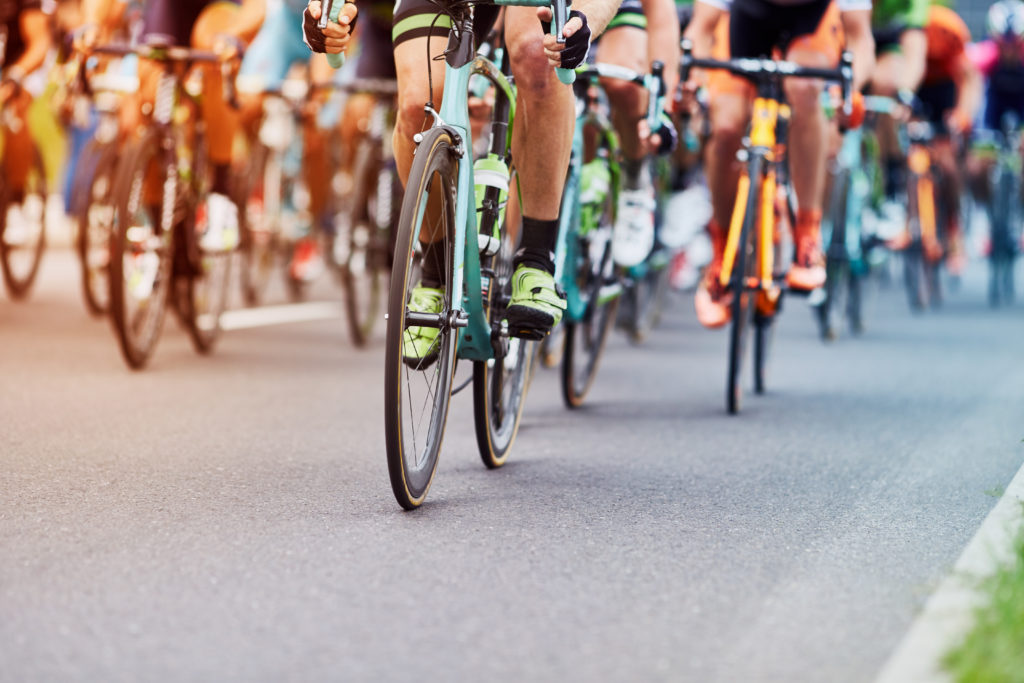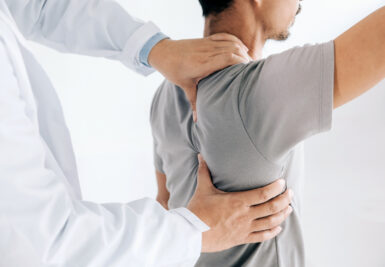THIS POST IS PART OF THE ULTIMATE GUIDE TO SPORTS MEDICINE
Cycling is a popular leisure and exercise activity. Furthermore, it’s also a form of transportation for many people. According to statista, around four million young adults cycle every year.
Not only do many people like to cycle, but they enjoy watching it as well. July 6th is the start of the Tour de France which continues until July 28th, 2019. The Tour de France is a 21 stage race that lasts 23 days.
According to the organizers, 3.5 billion people in 190 countries watch the Tour de France each year. Additionally, it’s one of the best-attended annual sporting events with a total of 12 million roadside spectators.
OrthoIndy spine specialist, Dr. Gregory Poulter, has been an active cyclist for eight years. He said, “I took up cycling to get in shape and lose weight. I have raced the Leadville 100 mountain bike race five times and have spent many fun trips riding the many Tour de France routes in the Alps.”
Long-term cycling injuries occur when you are doing the same motion over and over again. Your muscles get tired causing overuse injuries. Here Dr. Poulter discusses common cycling injuries and how to prevent them.
Common cycling injuries
- Lower back pain: When cycling, you are in the same position for an extended period of time and leaning over can put a lot of pressure on your spine causing discomfort. “Sacroiliac joint pain is a common cause of back pain in cyclists,” said Dr. Poulter. “Prolonged sitting and pushing on the pedals can cause the sacroiliac joint to twist, which can be a cause of sharp back pain.”
- Knee pain: It’s the most common type of overuse injury in cycling because often times cyclists don’t have their fit on the bike optimized. A saddle that is too low can place more pressure on the front of the knee (under the patella or knee cap) causing pain.
- Wrist and hand pain: With an improper fit on your bike, excess force can be placed on the wrists. On longer rides, this can result in numbness in the ring and smaller fingers. It’s sometimes known as handlebar palsy and it occurs when there is compression of the ulnar nerve which runs from your wrist to your little finger and ring finger.Carpal tunnel syndrome can also be made worse with pressure on the handlebars by long compression on the median nerve that runs through the wrist and palm.
- Neck pain: Develops when the muscles in the neck become fatigued by looking up for a long period of time. The muscles get too tired from carrying the weight of the head in the same position for a long period of time. Arthritis or pinched nerves in the neck may also be aggravated by prolonged neck extension on the bike.
- Hot foot: A burning sensation, numbness or pain on the underside of the foot. Occurs due to pressure on the nerves that travel through the ball of the foot and towards the toes. This is often a result of poorly fitted shoes.
- Achilles tendonitis: It is a common overuse injury that causes inflammation and aching pain in the achilles.
Common cycling crash injuries
- Fractured clavicle: Commonly known as a broken collarbone. Typically happens during cycling when you fall off your bike and try to catch yourself on an outstretched arm. A fall on an outstretched arm puts enough pressure on the clavicle bone that makes it snap or break.
- Broken leg or hip: “You can break your leg by hitting an object while cycling or even having another cyclist land on top of you if the crash is large enough,” said Dr. Poulter.
- Hand and elbow fractures: If you crash and fall off the bike, it is an instinct to try to catch yourself by extending your arm out. This can result in a broken wrist,, elbow or arm depending on how you land on it.
- Head injuries: It’s important to always wear a helmet while cycling. If you do get into a crash you may suffer from a concussion from hitting your head on the ground even with a helmet on.
- Broken ribs: Rib fractures are common when you fall on your side. ”They may be quite painful but typically heal on their own. Sometimes rib fractures can puncture a lung, if you have a crash with any difficulty breathing, call an ambulance and be evaluated immediately,” said Dr. Poulter.
- Road rash: Large skin abrasions are common with cycling crashes. “Superficial road rash should be cleaned and then covered,” said Dr. Poulter. “I prefer a non-stick telfa dressing with antibiotic ointment. They tend to seep for several days before they start to heal. Wounds that are protected heal more quickly and with less scarring than those that are allowed to scab over. Deeper abrasions may require sutures or skin grafts to heal. If there is any question, have them evaluated by a physician.”
How can cycling injuries be prevented?
- The most important way to avoid overuse injuries is to have your bike fit by a professional. This will take the pressure off your hands and lower back while providing the correct alignment for your joints.
- “Slowly build up your time on the bike to avoid overuse injury, 10% increase per week is typically considered safe,” said Dr. Poulter.
- Consider weight training and stretching to complement your cycling.
- Take it slow if you have pain and use R.I.C.E to help calm down inflammation if you are sore.
- Always wear a helmet and the correct safety equipment while riding.
- According to Dr. Poulter, you should, “wear bright colors when riding on the road. Consider having both forward and rear facing lights to make yourself visible to cars. Keep alert and do not wear headphones when riding on roads with cars.”
LEARN MORE ABOUT SPORTS MEDICINE TREATMENT AT ORTHOINDY
Schedule an appointment
Your well-being is important to us. Click the button below or call us to schedule an appointment with one of our orthopedic specialists. If your injury or condition is recent, you can walk right into one of our OrthoIndy Urgent Care locations for immediate care. For rehabilitation and physical therapy, no referral is needed to see one of our physical therapists.





